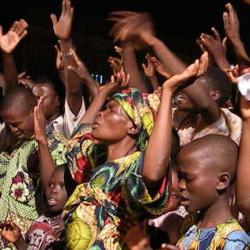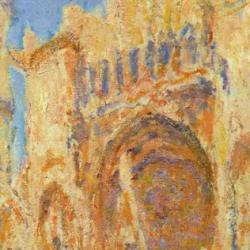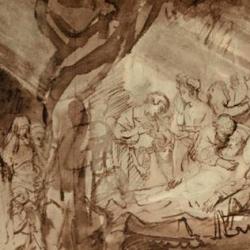Jaime Waters has written a book-length study of Threshing Floors in Ancient Israel. She summarizes the archaeological data regarding threshing floors, and discusses ancient agriculture, but her focus is on the theological dimensions of threshing: “in the minds of biblical writers, threshing floors served purposes beyond their agricultural functionality.”
The theological uses are not detached from the functional ones. “Since threshing and winnowing are life-sustaining activities that happen on threshing floors, threshing floors were fundamental locations for human nourishment and survival. At threshing floors, inedible crops were beaten, trodden, and shaken to free the edible food held within. Threshing floors played a significant role as the locations of sustainability and survival.” Since Yahweh is the ultimate source of Israel’s life, He is naturally associated with that location: “Yahweh was considered intimately connected to threshing floors because of the essential life-sustaining activities that happen at these locations.”
Waters treats the threshing floor as a sacred space, claimed by Yahweh, and suitable to rituals of worship: “Mourning rites, divination rituals, cultic processions, and sacrifices all happen on threshing floors, and Solomon’s temple is built on a threshing floor. It is possible that these nonagricultural activities are depicted on threshing floors because these are open-access spaces used seasonally for agricultural functions. For several months of the year, threshing floors are idle, so they were available for various activities. Because these areas were cleared after use and were often open-access locations, they may have been ideal and logical choices for other/nonagricultural activities throughout the year. However, close investigation of biblical accounts reveals that many of these nonagricultural activities are sacred and/or ritualistic in nature.”
The book is a valuable study, but it would have benefited if Waters had allowed herself a more adventurous allegorical imagination. She notes, for instance, that threshing imagery is used to describe destruction: “First Isaiah describes Yahweh’s careful manner of destruction as analogous to a farmer’s care in threshing crops (Isa. 28:27–28). Likewise, Second Isaiah describes Israel as a threshing sledge who will thresh and winnow enemies (Isa. 41:15–16). Amos uses similar language when he describes Damascus defeating Gilead with iron threshing sledges (Amos 1:3). Additional passages will be explored in the following chapter which assert Yahwistic control and judgment over enemies using threshing-floor imagery.”
At that point, we should pause to recall the literal effect of threshing: It separated chaff from wheat, and so made the wheat usable for food and for offerings to Yahweh. Perhaps the imagery of the threshing sledge is not wholly destructive; perhaps Israel is a threshing sledge because she drives over the nations to separate the chaff from the wheat, so that the chaff can be blown away and the wheat gathered to Yahweh’s storehouse. Threshing, in short, may symbolize Israel’s positive mission to the Gentiles.
So too, the fact that Solomon’s temple is build on a threshing floor suggests something about what happens in Israel’s worship; and perhaps the nighttime meeting of Ruth and Boaz on the threshing floor figures into the cultic uses.













